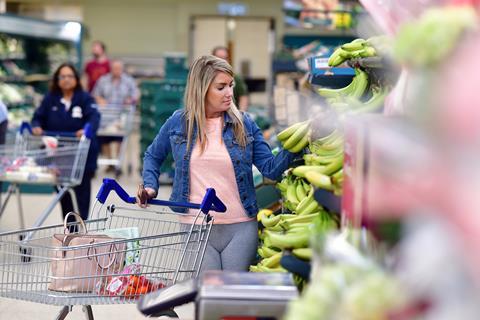Analysis of five-year trend shows changes in consumer shopping and consumption patterns
Consumers’ grocery habits have evolved in the five years since the Covid pandemic began, with stores’ sales tactics bringing more loyalty.

That’s according to grocery market analyst Kantar, which has been looking into how consumers’ grocery habits have evolved as the five-year anniversary of the first Covid lockdown approaches.
Sally Ball, head of retail at Kantar, noted that consumers haven’t gone back to old patterns, and shopping trips remain below pre-pandemic times.
Households made one less visit to the supermarket in February 2025 than in 2020, while online shopping appears to have stuck, taking a 12.3 per cent market share this month versus just 8.6 per cent in February 2020.
“One of the most interesting changes has been a move to simpler eating habits as we look for convenient shortcuts to make our lives easier,” Ball said. ”People are taking less time to prepare meals, and prep time in the evening, for example, has declined from almost 34 minutes in 2020 to 31 minutes in 2024.”
Kantar consumption data also shows that people are now using fewer different ingredients when making food, both at lunch and in the evening. Consumers are snacking less often too, dropping more than 330 million occasions in 2024 versus 2023.
Attracting loyalty
Ball added that it is difficult to untangle the cost-of-living crisis from any post-Covid analysis, with the other big headline of the past few years being consumers’ hunt for value. “You might think that people would shop around more to find the best deals but in fact, that’s not the case,” she said.
”Households visited just under five different grocers this month, the lowest level in February since 2021. The growth of supermarket loyalty schemes is partly behind this as shoppers use them to unlock exclusive discounts.”
The analysis comes as Kantar revealed that take-home sales at the grocers rose by 3.6 per cent over the four weeks to 23 February compared with one year ago.
Since Clubcard first hit the scene in 1995, Tesco has risen to become Britain’s largest grocer – up from second place 30 years ago. It now holds 28.3 per cent of the market in the 12 weeks to 23 February 2025, while its sales growth is at its highest since March 2024 at 5.8 per cent.
Retailer promotions helped to hold grocery price inflation steady at 3.3 per cent in February 2025, as spending on deals rose again. Items bought on offer now account for 27.6 per cent of sales, a rise of 0.3 percentage points on last year.
Premium own-label lines also continue to be popular, growing at 13.3 per cent this month, as people seek cost-effective ways to treat themselves.
Ocado’s march continues
Ocado was the fastest-growing retailer for the tenth consecutive month with spending increasing by 9.6 per cent, holding its share of the market at 1.9 per cent. M&S has also continued its growth trajectory with grocery sales climbing by 12.2 per cent across its bricks-and-mortar stores.
Among the discounters, Aldi accelerated its growth by attracting 377,000 more shoppers through its doors. The retailer achieved a market share of 10.3 per cent following a 4.9 per cent rise in sales – its highest rate since January 2024.
Lidl has also seen its portion of the market rise by 0.3 percentage points to 7.3 per cent compared with February 2024, with sales up by 8.1 per cent.
Sainsbury’s made gains in the 12 weeks to 23 February, increasing its share of the market from 15.5 to 15.7 per cent compared to this time last year. Morrisons now holds 8.6 per cent of the market, while Asda has 12.6 per cent.
Convenience retailer Co-op remained in growth, giving it a market share of 5.1 per cent. Waitrose’s sales increased by 3.2 per cent, helped by almost 200,000 additional shoppers.
Spending at frozen food specialist Iceland was 0.7 per cent higher, maintaining a share of 2.3 per cent, the same as this time last year.



